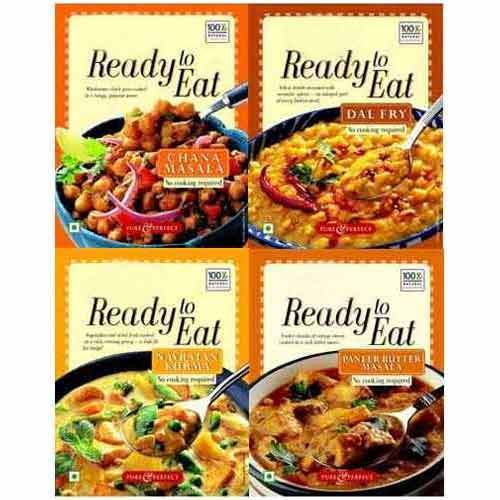Packaging and labeling are one of the key factors driving alcohol purchasing decision for an average consumer. For years, the alcohol packaging industry focused on developing sleek, sophisticated bottles with elegant labels, a significant factor in brand positioning. Beer was amongst the first alcoholic beverages to be poured into something other than glass container. Beer cans gained popularity several decades ago, however always posed the problem of lack of resealability, one of the most important package attributes for consumers. In wine segment, sales of carton box (e.g. Tetra Pack) and bag-in-box packaged wine started to accelerate in early 2000s, though these were mostly associated (sometimes not without a reason) with substandard quality products. This has continued to improve, however till date, it is the bottle that still rules alcohol packaging, and any other form of packaging in alcohol drinks generally meets with consumers’ skepticism and assumption of inferior quality.
With a relatively new concept of alcohol sold in pouches, it is unreasonable to expect a different reaction, with associations with baby beverage rather than classy adult drink. However, something is buzzing in the alcohol pouch packaging industry, and while still marginal, several launches of alcoholic drinks and beverages in this packaging format were welcomed with surprising consumer acceptance.
What’s the growth story so far?
In September 2012, Nielsen reports indicated that retail sales of pouch-packaged alcoholic beverages were about US$200 million annually (compared to US$12 million sales in a comparable period in 2010). This growth is being eyed by more and more producers, and invites market entries across new products, flavors, and alcohol types. Interestingly, it is being observed that this new packaging format brings additional sales and expands the market – while there is some level of cannibalization of existing sales with consumers shifting from purchases of bottled drinks to pouched drinks, there is a number of new consumers, who never bought such drinks before (and probably would not have tried them in bottled format, if it was not for the curiosity of trying a new drink in a pouch).
Ready-to-drink and frozen cocktails are currently the leading segment, in which pouches are gaining popularity. For instance, sales of several frozen cocktails such as margaritas and daiquiris, offered by brands such as Daily’s and Cordina in 187ml and 296ml pouches, are known to have witnessed healthy growth in 2012 in the USA, and it is expected that majority of growth will continue to be experienced in this market. The UK has also seen launches of pouched alcoholic drinks over the past few years; however, they were typically associated with summer season.
Another segment to have seen pouch launches was, surprisingly, vodka. In early 2013, Good Time Beverages launched its first Ultra Premium Vodka in flex pouches, positioning the product as an environmentally- and budget-friendly option. This was an addition to the existing line of pouched Good Time Beverages’ products, Bob & Stacy’s Premium Margarita and Big Barrel Spirits.
In wine segment, while multiple wineries in the USA, Australia, Europe, and South Africa have been using pouches for several years, the trend is yet to take off in mainstream use. This is mostly due to the fact, that the common perception of wine being a traditional and sophisticated product clashes with pouches being typically associated with hip, unsophisticated, low quality products. Launches of pouched wine products tend to focus around multiple-serve quantity pouches, e.g. launches by Echo Falls and Arniston Bay, both in 1.5 liter stand-up pouches with dispensers, launched in the UK in ASDA in summer 2013. The products were so popular that, ASDA followed with the launch of its own pouch wine brand. ASDA’s sourcing arm, IPL Beverages, which deals with bottling and pouching, said that the demand for pouched wines was so great that it led to sales forecasts being outstripped by 400% by the actual demand.
What’s so great about the pouches?
Contamination and oxygen barrier
Glass has long been considered the best material to store wine and other alcohols, mostly due to the fact that it is neutral and does not lend flavors to the bottle’s content, even during long-term storage. Alcohol was also too aggressive for most flexible packaging available in the market, affecting the layers of films used in such pouches and compromising their safety and durability. Therefore, previous limitations to the introduction of pouches in alcohols packaging were driven not by the problems with leakage or thickness, but rather with the right choice of materials and laminating – materials that would offer adequate protection and prevent product’s ingredients from changing their properties. The currently available pouches do not pose such problems, e.g. with triple-layer structure: polyethylene terephthalate, aluminum metalized film, and polyethylene. Instead, they offer very good oxygen barrier with around one year shelf life as the tap nozzle allows for one way flow, and once the beverage is poured, oxygen does not enter the container, extending the product’s freshness.
Ability to compete in economy price range
Selling alcoholic beverages, such as wine or vodka, in a pouch, enables the producer to compete against the glass bottle in the economy price range, both in single serving capacity, as well as larger 1.5-2 liter pouches. For instance, in 2012, the single-serve 10-ounce pouches of fruity malt-beverage alcoholic drinks by Parrot Bay or Smirnoff retailed for around $1.99 in the USA. Thus, it was a cheap, easy-to-carry option that offered these alcoholic drinks at a fraction of a bar or bottled equivalent price. In Europe too, economy packs of wine, sangria, and other drinks in larger 1.5 liter pouches meet with customer acceptance, allowing the producers to increase sales.
Lightweight for reduced transportation costs and greener label
The traditional glass bottle always brought challenges, due to its energy intensity in production process, as well as weight and fragility in transportation. Pouches, on the other hand, offer reduced weight and by far greater resistance in transportation, considerably reducing transportation costs (using less fuel to transport same amount of the product), at a lower risk of breakage. Pouches are also presented as a greener alternative to glass, as they do not require such energy-heavy production process. Additionally, many currently available pouches are increasingly made with recyclable materials. Overall, pouches are believed to offer an 80-85% reduced carbon footprint compared to glass (i.e. flexible film pouch is said to offer a carbon footprint of approximately 20% of traditional glass bottles). Also, producers indicate that in alcohol packaging, the cost of pouches stands at around 68% of the cost of traditional bottling.
Frozen single- and multiple-serve convenience
From consumer’s perspective, too, pouches have the potential to deal with some of the disadvantages inherent to glass bottles. Several alcoholic drinks launched in a pouch are positioned as straight-from-the-pouch, instant, ready-to-drink cocktails, that do not require the use of cork pullers or even glasses. Currently offered pouches, thanks to metalized layers, allow for faster cooling (about half the time required to chill a bottle), and can be frozen, while cans and bottles cannot. Such ready drinks are typically launched in single- or double-serve size, allowing the consumer to save time of preparing a real drink. There have been several launches in larger capacities as well, such as Pernod Ricard’s Malibu rum launched in 2010, at 1.75 liters pouch size. The product was not positioned as a single serve but rather emphasized it was enough for 10 cocktails, for use in larger gatherings or over period of time, thanks to resealable nozzle. Also in wines segment, pouches, thanks to their reduced weight and resistance, can be larger, at 1-2 liters. 2-3 liter pouches are particularly popular in food service sector, e.g. in restaurants selling wine by the glass.
Lightweight for on-the-go use by consumers
Reduced weight and resistance to breakage have found consumers’ acceptance, as pouched alcoholic beverages are often positioned as on-the-go, convenient, easy products for use in outdoor situations, picnics, concerts, boating, barbecues, etc. Convenience of pouches also comes from the pack’s stability thanks to the popular stand-up design, commonly offered reseability (in a form of a tap or screw cap, a considerable advantage over vast majority of cans). Pouches are believed to be stronger, safer, and more convenient for consumer transportation, and they eliminate the risk of an unpleasant realization of having left the cork puller at home.
Challenges and question marks
It is unlikely, to say the least, that the nearest future will see pouches enter the mainstream dinner-table use. As of 2013, pouches had rather limited application in retail alcoholic drinks markets globally, with differing levels of popularity across regions and seasons. The most significant challenge for this packaging format is still to build consumer trust in quality of an alcoholic drink sold in a pouch. Equally important challenge is to overcome the consumers’ perception that classy alcoholic beverages (wine, vodka) should come only in a bottle and perception of mismatch of pouched wine and traditional wine etiquette.
While the list of potential advantages of pouches in alcohol packaging is unquestionably robust, there is still a key question of the consumer’s long term acceptance of this packaging format. It remains unclear what it will mean to a range of alcoholic beverages, especially in wine, whisky, and vodka segments, which have traditionally positioned themselves in upper to premium segments. Will the pouches, no matter how sleek or elegant in design, affect such a brand positioning? Will they ever go beyond the outdoor use, and enter mainstream use (dinner tables in homes and restaurants)? Will a pouch be ever fully accepted in such sophisticated setups, or will the association with juices, baby drinks, or inferior quality remain too strong? And finally, while producers emphasize green aspects of pouches in terms of production and transportation, what is the real environmental impact of such pouches ending up in a landfill, considering that not all used pouches will enter recycling stream?








